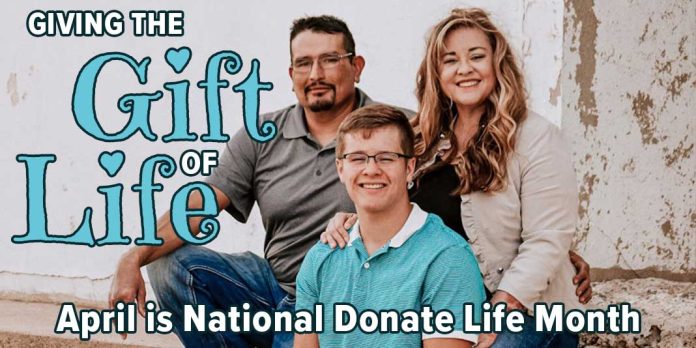From taxes to Easter, April is a busy month. What many may not know is that April is also National Donate Life Month.
National Donate Life Month raises awareness about organ donation. April is full of events and activities that encourage people to register as organ donors, but the month also celebrates and honors those who have donated and saved lives.
Most people register to be a donor when receiving or renewing their driver’s license. Organ donation status can be confirmed by the presence of a small, red heart on an individual’s license or ID. For those who are unsure, additional information about status and how to become an organ donor can be found at lifeshareoklahoma.org.
Becoming a Donor
The human body is home to 78 organs, and each has its own purpose and function. However, donating isn’t limited to organs. The list of tissues and organs that can be donated continues to change and grow, but as of now, a donor can give organs, tissues, corneas, blood, platelets and bone marrow. According to the Health Resources and Services Administration, “One donor can save eight lives and enhance the lives of 75 more.”
There are currently more than 106,000 people on the national waiting list for transplants, 600 of which are Oklahomans.
Heather Dean, manager of communications for LifeShare Oklahoma and advocate for organ donation, shared more about donating, donor qualifications and National Donate Life Month. “Everyone can register to be a donor, so don’t rule yourself out because of age, medical history or disease,” she said. “People often think they’re not eligible to be a donor because they’re too old, or because they have preexisting conditions, but that’s not true.”
She continued, “At the time of death, medical professionals will determine whether or not you can become a donor.” As for what can be donated, she explained, “LifeShare recovers both organs and tissue, and the life-saving organs are lungs, heart, kidneys, liver, pancreas and intestines.”
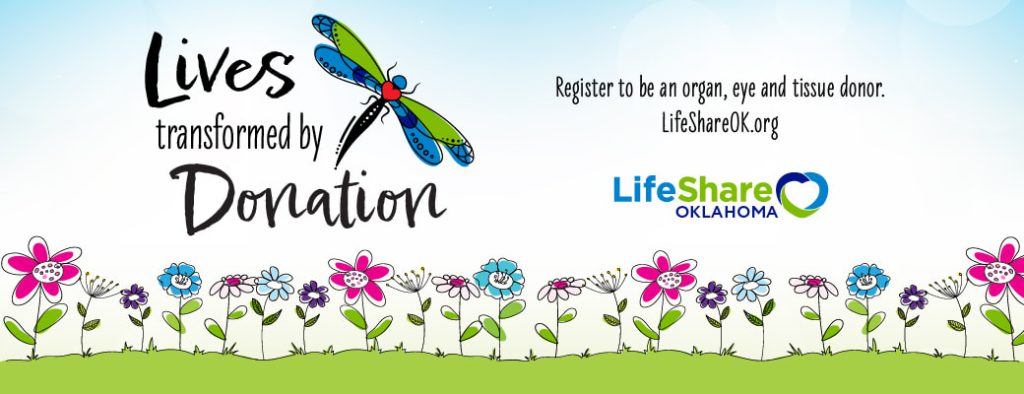
LifeShare also recovers tissues, which include corneas, tendons, heart valves, veins, skin and bones. A primary care physician can share additional information about donor qualifications.
With more than 100,000 Americans currently awaiting organ, blood and tissue donation, the list is growing at an alarming pace. “A new name is added every nine minutes, and everyday 17 people die waiting,” Dean said. “It’s important for every community to donate because that list is made up of diverse people who need different blood types and tissue types to receive the gift of life.”
Fortunately, the number of Oklahomans participating in organ donation is on the rise as well. “In Oklahoma, during 2020 and 2021, we had record-breaking years of organ donation and lives saved.”
Oklahomans Awaiting Organs
Lendl and Cristil are both on the transplant waitlist, and they’re both waiting for a kidney. Being on the waitlist is different for each individual, but on average, the wait time varies between three to five years. Cristil has been on the waitlist for six months, while Lendl has been on the waitlist for two and a half years.
Lendl’s Story
Lendl was given a powerful antibiotic that destroyed 80% of his kidneys, sending him into renal failure. This resulted in his name being placed on the transplant list. While he waits, he watches his diet and keeps up on his medication. He said the whole process has been a roller coaster of emotions, and he compared the wait to packing for a vacation he knows nothing about. While he waits, he says that he’s seen the best come out in people, and that’s been the best part of the process for him. “People have really rallied around me, and they keep checking on me. The support is very encouraging.” He went on to say, “Seeing the good come out in people has been the best part of this.”

According to Lendl, one of the hardest parts has been the wait for someone to pass. However, he recognizes the selflessness of organ donors and their decision to donate. “We have to remember that they made a very unselfish decision to donate their organ(s), so I feel like I not only have to live my life for myself, but I have to live my life for my donor,” he said.
He went on to say, “I have to live the best life I can live to honor these individuals for their heroism.”
Cristil’s Story
Cristil’s kidney failure began five years ago, and within the last year, her kidneys have taken a turn for the worst. She’s been active on the transplant list for six months, but she’s been dealing with the deterioration of her kidneys and the health issues that accompany it for the last several years.
She began dialysis in December, and she’ll continue with the treatment until she gets a match for a kidney transplant. This may take as long as five years.
Dialysis is a process that performs some of the duties our kidneys perform, and it does so in an effort to keep the body in balance. Dialysis removes extra fluids and waste from the body, and this helps prevent them from building up. Dialysis also keeps safe levels of minerals in your blood, and it can help regulate your blood pressure. It’s a type of treatment that helps your body when your kidneys aren’t able to.
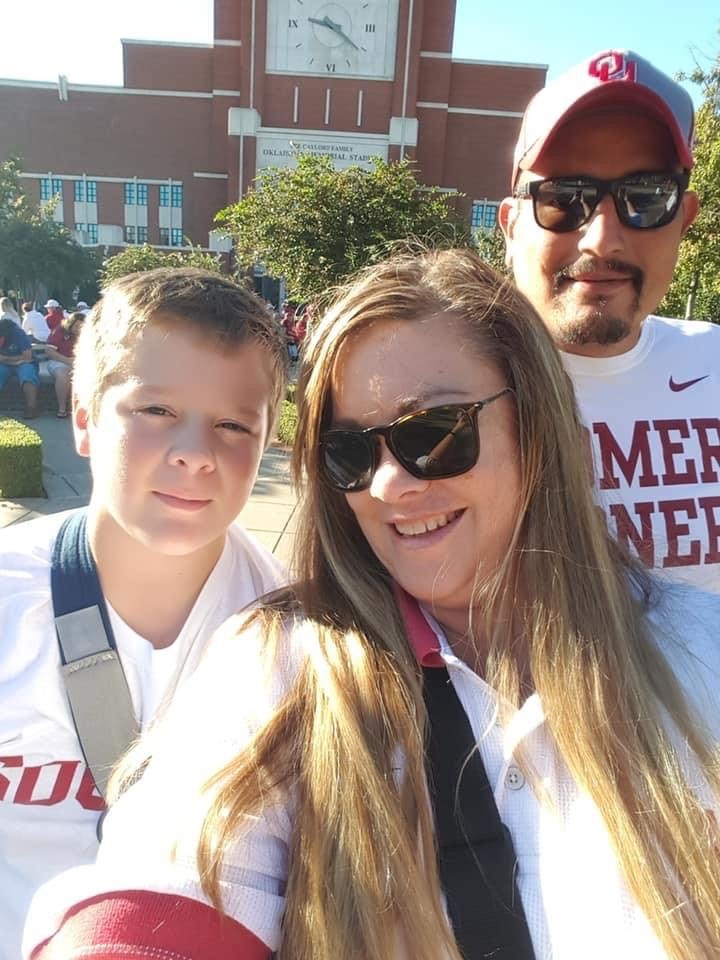
Being on dialysis has been a major life adjustment for Cristil because it requires so much from her. She states that it’s hard juggling work, dialysis and all of the doctors’ visits.
In addition to being a full-time teacher, Cristil goes to the dialysis center in Enid three days a week for four hours at a time. Fortunately for Cristil, the staff helps make the experience less daunting. “The dialysis center is amazing. The people there are so friendly and helpful, and they’re very nice.”
“I’m so thankful that I have them because it would be so much harder if I didn’t have a place where I felt comfortable.” She said the process has humbled her because she sees that she has a lot to be thankful for.
“You can really start to feel sorry for yourself, but then I look around and see how much I have to appreciate.” For Cristil, the best part has been feeling the amount of love she’s experienced. “I have a great support team, and I have great friends and family.”
Her journey has given her a “renewed faith in the human race.” She continues to wait on the gift of life, but she also realizes what a gift life is in itself.
Living Donors
Live donors aren’t unheard of, but they’re not as common as deceased donors. Mike and Meagan are members of the Enid community, and they have both given the gift of life.
Giving the Gift of Life: Mike and Mindy
Mike gave the gift of life to Mindy, and he gave her the chance to be a mother. Mindy said, “Mike’s kindness allowed me to be a mom.” She went on to say that Mike was a superman to her.
Mindy was diagnosed with kidney disease when she was 30 years old. She managed it with medication for a few years, until it became too much for even the medication to handle. When she was 33, her kidneys began to fail, and she had to begin dialysis. Mindy was on dialysis for six and a half years, and she said that it was “life altering.”
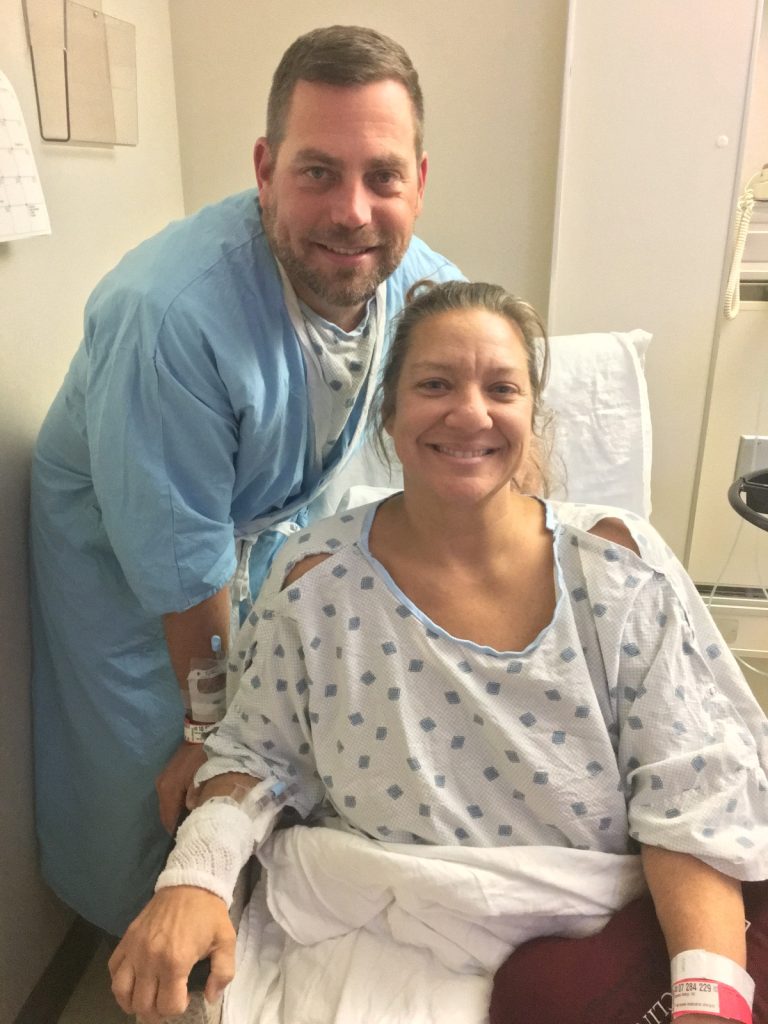
She was fortunate enough to do it at home with the help of her husband, but it was still a three and half hour process, five times a week. During this time, Mindy learned that she would not be able to have children naturally, and this was a direct consequence of needing an organ transplant. She was devastated by the news, stating that the life she dreamed of as a child was “shattered into a million pieces.”
In 2017, Mindy received the gift of life, a new kidney. “Mike gave me a second opportunity at the life I wanted to live,” she said. “His kindness, generosity, spirit and love gave me an extra push to be the person I knew that I was.”
The icing on the cake for Mindy was that, one year after receiving a kidney, she and her husband became parents through adoption. Mike gave Mindy a second chance at the life she dreamed of, and according to Mike, the best part of the process has been the new relationships he’s gained with Mindy and her family.
A Daughter’s Gift: Meagan and Lonnie
On Valentine’s Day 2022, Meagan gave the gift of life to her father. Lonnie, Meagan’s father, was born with one kidney, although he was unaware of this until he was 50 years old. At that time, his doctors started keeping an eye on his kidney. Over the next few years, his only kidney began to steadily decline, and he was put on the transplant list.
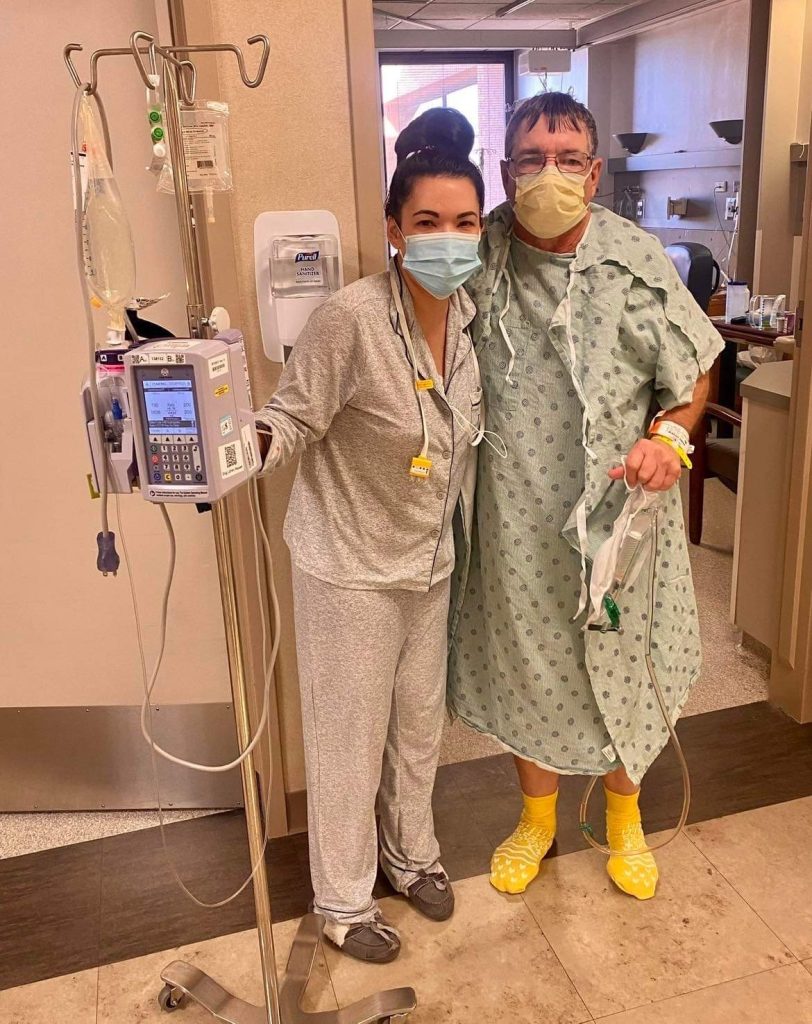
Meagan attended a few of Lonnie’s doctors’ appointments, and that’s where she learned more about being a live donor. When she mentioned donating to her father, he was adamantly against it because he wanted to prioritize her health and wellbeing. They talked about it for several months, and for his birthday one year, she got him a can of kidney beans. She then proposed talking to his doctors about the possibility of her being a live donor.
Lonnie took his questions to his doctors, his biggest concern being his daughter’s health. Meagan got the ball rolling from there, and on Valentine’s Day in 2022, she gave her father one of her kidneys.
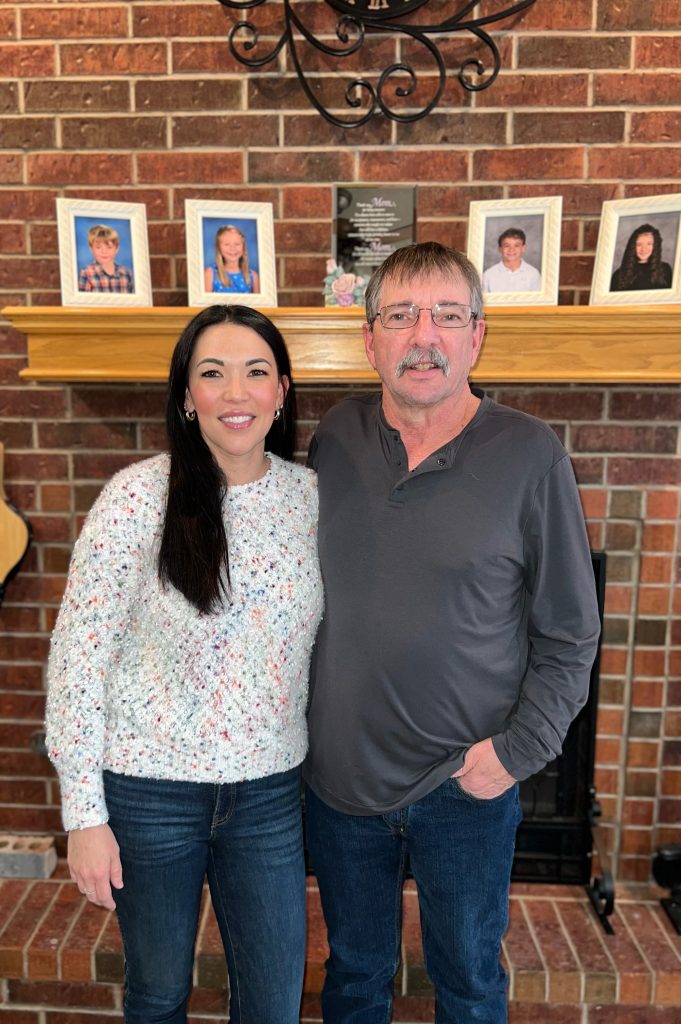
They chose to share their story in hopes of informing others about the process and life after. “We’re okay with doing this because we want people to know that it’s not necessarily easy, but it’s totally doable. I’m living a normal life, and he doesn’t have to do dialysis – he can live a normal life too,” Meagan said.
Lonnie was nearing retirement, and Meagan didn’t want her father to spend his retirement in poor health or on dialysis. Meagan gave her father the gift of life, and now, with a healthy kidney, he is able to enjoy his retirement years.
A Recipient’s Story: Cindy and Kenny the Kidney
Cindy received her new kidney in 2020. She was diagnosed with chronic kidney disease when she was four years old, and as the years went on, her kidneys slowly started to deteriorate. She was put on the transplant list in 2020, and she was fortunate enough to only be on the list for four months.
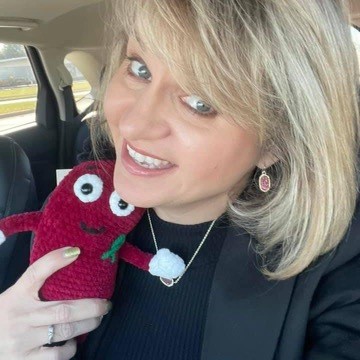

Cindy underwent a successful kidney transplant operation and was released from the hospital on her 43rd birthday. Since then, she has named her kidney “Kenny the Kidney,” and the sign outside of her office reads, #KeepKennytheKidneyhealthy.
After she was given the gift of life, Cindy said, “I want to be a better person.” Cindy states that she learned a lot through her journey, and now she is an advocate for organ donation. “You have the chance to save someone’s life, and I think it’s important that people realize it doesn’t matter your age, race, or sex. Everybody can make a difference,” she said. “The more you share, the more you know, and the more you grow.”
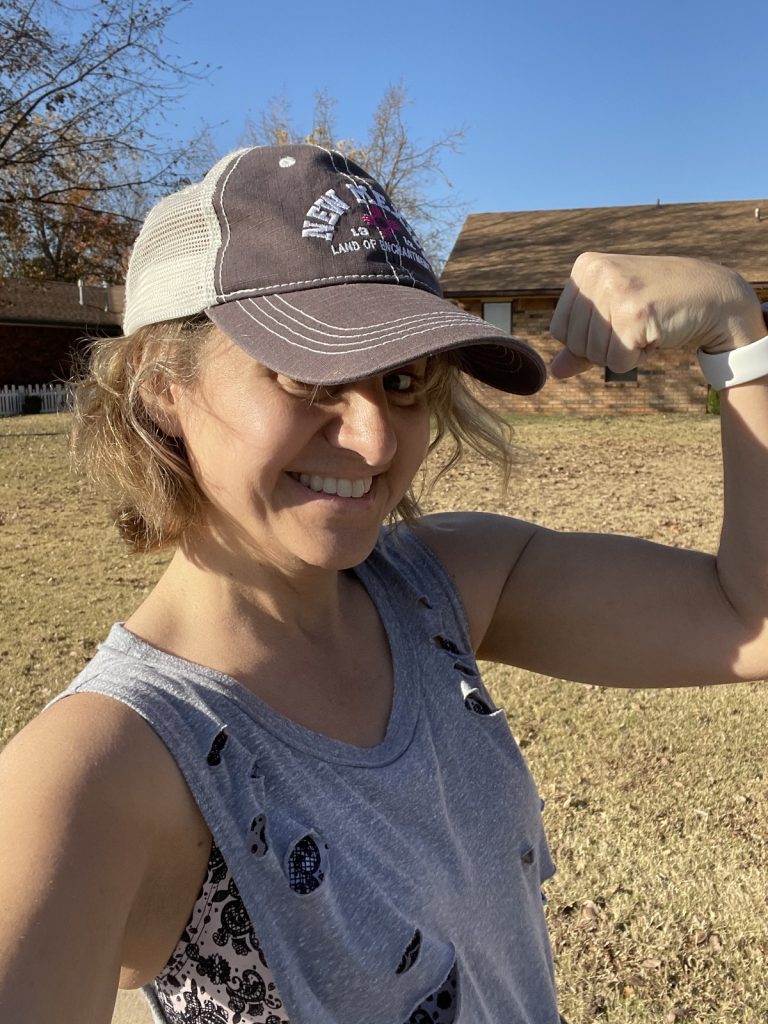
National Donate Life Month brings awareness to organ donation and registration, and it celebrates those who have donated and saved lives. Organ donors have allowed individuals to go on and live the life they’ve dreamed to live.
For questions about becoming an organ donor, contact a medical professional or visit lifeshareoklahoma.org for more information.




